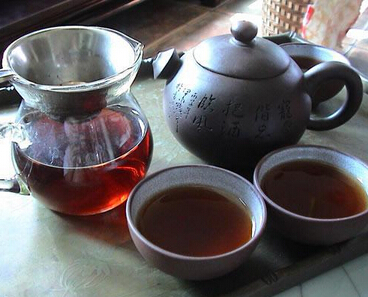Generally, tea is for drinking, but there is one type that becomes better with longer storage and fermentation time, even forming a unique collection culture internationally—that is Pu-erh tea. The older the Pu-erh tea, the more precious it is, hailed as a 'drinkable antique.' Moreover, the health benefits of Pu-erh tea are increasingly attracting attention. So, how does one choose good Pu-erh tea?

Benefits of Pu-erh Tea
It is understood that Pu-erh tea is made from high-quality Yunnan large-leaf tea, processed through special methods. The tea strips are thick and large, with a dark brown or reddish-brown color, offering a mellow and sweet taste with a unique aged aroma. Besides the benefits of other teas, Pu-erh tea also has a series of remarkable effects, such as reducing fat and aiding weight loss, preventing diseases and cancer, combating atherosclerosis, having anti-inflammatory and antibacterial properties, protecting and nourishing the stomach, reducing fatigue, and preventing aging.
The 'Four Principles' of Pu-erh Tea
First, the protected production areas of Pu-erh tea are in 11 prefectures and cities in Yunnan Province, including Pu'er, Xishuangbanna, Lincang, and Baoshan, covering 75 counties (cities, districts) and 639 towns (townships, sub-district offices). Tea not produced in these protected areas is not considered Pu-erh tea.
Second, it must be made from large-leaf varieties. Within the protected areas of Yunnan Pu-erh tea, there are large-leaf, medium-leaf, and small-leaf tea varieties, but only large-leaf varieties from these areas can be used to produce Pu-erh tea.
Third, it must be sun-dried. The drying method for Pu-erh raw tea must be 'sun-drying,' which aims to preserve the enzyme activity in Pu-erh tea and ensure its post-fermentation. This is one of the key processes that distinguish Pu-erh tea from other teas. During the harvest season, there is often a long rainy period. Whether production enterprises have sun-drying facilities and can ensure sun-drying of the fresh leaves during this time is a critical factor in assessing the quality of Pu-erh tea producers.
Fourth, it must undergo post-fermentation. Pu-erh tea is either compressed into shape and naturally fermented based on sun-dried raw tea or undergoes artificial pile fermentation with sun-dried raw tea. Both methods involve post-fermentation, which differs from the fermentation processes of black tea and oolong tea.
The 'Three Excellences' of Pu-erh Tea
First, excellent raw materials. Famous mountains produce good tea. Jingmai Mountain is a base for Pu-erh tea raw materials, with 28,000 acres of well-preserved ancient tea trees. Tea from this area is known for its dry tea aroma, tea soup fragrance, cup-bottom scent, and honey-like sweetness, widely recognized by Pu-erh tea enthusiasts as high-quality tea. Tea from famous mountains like Ban Zhang, Nannuo Mountain, and Mengku is also excellent.
Second, excellent processing techniques. Every step in the production of Pu-erh tea, from fresh leaf picking to finished product出厂, is crucial. Enterprises must strictly adhere to national standards when setting their production standards and follow standardized requirements in organizing production.
Third, excellent storage conditions. Pu-erh tea should be stored in a clean, ventilated, light-proof, dry, and odor-free warehouse. Under符合标准 conditions, it is suitable for long-term storage.
Precautions
Pu-erh tea is a food product. Like selecting other foods, good Pu-erh tea should have appealing color, aroma, taste, and shape. Raw Pu-erh tea has a dark green color, and good raw tea presents a golden and translucent liquor. Ripe Pu-erh tea has a reddish-brown color, and good ripe tea offers a rich, red, and bright liquor. The tea strips should be tightly rolled and visibly hairy, with a pure aroma free of odd smells and a mellow, sweet taste. Good Pu-erh tea, whether in dry form or as liquor, has captivating aromas with distinct characteristics and must never have any odd smells. Some claim that Pu-erh tea should have a moldy smell, insisting it indicates authentic aged tea. This is entirely incorrect. Pu-erh tea with moldy or odd smells should not be purchased or consumed. Genuine aged tea is rare and can only be reliably obtained within trustworthy circles of aged tea enthusiasts.
Related link: Benefits of Golden Pearl Pu-erh